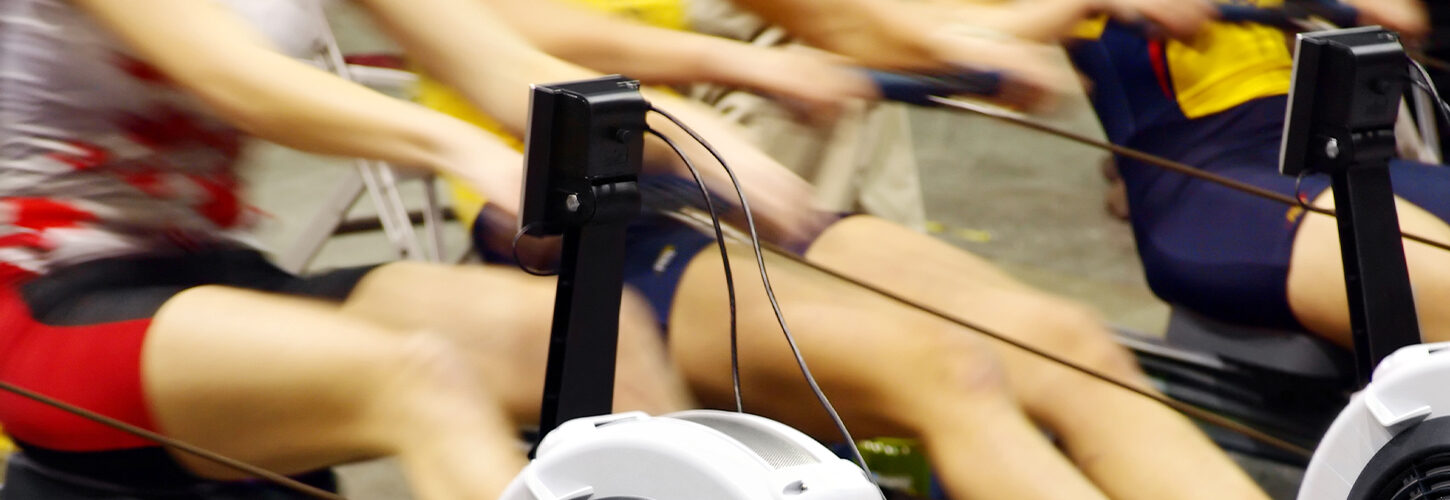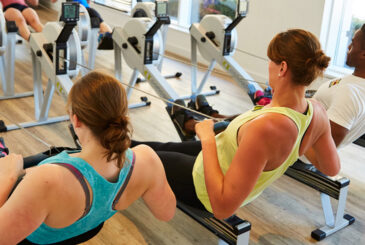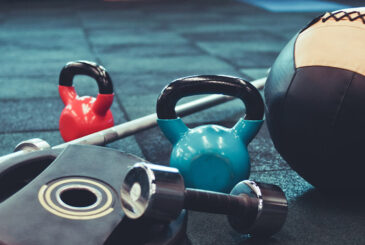Sean Gaffney holds world titles as a PR3 indoor rower in both the 2km and 500m events having competed at the British Rowing Indoor Championships many times. In his first article he looks at the things he wishes he knew sooner when he started rowing
My name is Sean Gaffney and I am here because I was asked to share my thoughts on the differences between 500m and 2k races. My back history includes becoming a below knee amputee after an accident in 1999 whilst I was training to compete in what was considered the world’s toughest team event, the Royal Navy’s Inter Command Field Gun Competition. I continued in the Royal Navy until retiring in 2019. On retirement I became a PT, sports therapist and British Rowing indoor rowing coach.
In 2016 I competed in the Invictus games winning four medals in three different disciplines, two of the medals being a gold and silver in indoor rowing. I then went on as a PR3 rower to win the 2017 CRASH-B and 2019 FISA World Indoor Rowing Championships (WIRC), along with the 2018 CRASH-B and two silver medals and a bronze at the 2018 and 2020 WIRC. I also have five home nations and five British indoor rowing titles. I have competed for Wales internationally as a para powerlifter and now as a fifty year old I’m happy to forego open events and gracefully enter my age group competitions.
Disclaimer! This article didn’t turn out as planned
I’m not going to talk about the difference in foot stretcher position 2k v 500m. I’m not going to talk about utilising the body’s energy systems in a 2k race, or about post-activation potentiation for a 500m max effort. I’m not even going to mention training plans, or the fact that I believe lifting heavy weights goes hand in hand with rowing.
I will write about the things I wish I knew sooner when I started indoor rowing with a view to encouraging new rowers that have come to the sport during the covid period and found a supportive and inclusive sport, that I honestly wish I had come to decades ago.
In late 2015 I was invited to take part in indoor rowing trials for the 2016 Invictus Games. I think all of us looked on with trepidation at the rowing machines. I had used an erg to no great effect before and I seemed to remember the last time I’d sat on one was in 2009 in a dusty tent in Iraq.
The trials were simple enough. A one minute row followed by a 15 minute rest, then a four minute row, both for best meters. My plan was simple, sit down, strap in and pull (I’ve since learnt to push) as hard as I could for both events.
The most important thing I can suggest to new rowers looking to improve their times is to learn how to pace correctly
Now, for one minute going hell for leather isn’t a bad strategy and it worked for me, getting well over 350m, but for a four minute row that plan didn’t work. Looking back I can’t believe I thought it would. After 90 seconds I had nothing left to give. I had set out at the same pace as my one minute effort. I had gone too fast too soon with no hope of getting to the end in one piece. My muscles burned, lactic acid flowed through my body, legs cramped, my back seized and my arms struggled in vain to get me to the finish. Four minutes was a very long time. As I sat on the erg at the end (never collapse off an erg) I decided that I needed a better plan.
I went away and started learning how to indoor row. I spoke to water rowers and ergers. I went to classes, I scoured YouTube, I videoed myself erging and I practised, practised, practised.
The most important thing I can suggest to new rowers looking to improve their times is to learn how to pace correctly. Whether you’re doing a training piece or a race, pacing is how to get from the start to the finish effectively. I think there are five things that give the ability to pace well (remember pacing is just getting the desired time or distance you want, it’s not about thrashing yourself to PB every time you erg). The best race strategy is useless, unless you learn to control the numbers you see on the machine.
Five top tips
Understand the machine
The performance monitor (PM) reacts to what you do on the machine. It only reacts to stroke length, speed the chain is moved and how much force is placed on the chain. You need to be able to manipulate these three factors to affect the PM to your benefit.
Learn how to use the PM and its different functions. If you’re a less experienced rower then choose the screen that gives you the least information to be able to pace correctly without getting confused and inadvertently looking at the wrong metric. Using the avg/500m and stroke rate (SR) is all that is needed to pace a row, anything else is just superfluous.
Drag factor (specifically relevant to Concept2 rowing machines)
This should come under the heading of understanding the machine but the dark art of drag factor (DF) deserves its own mention. In short we use the damper lever to control the amount of air that is allowed to get to the fan. This affects the speed the fan will accelerate and deaccelerate and allows us to select a DF suitable to the row we are doing.
The simple analogy I was told was to think of selecting a DF as you would selecting the correct gear for a bike ride. The gear I would select for a velodrome sprint is different to that I would choose for a long ride. Setting the damper lever to 10 thinking you will get a harder workout is counterproductive, unless you are powerful enough and have good enough form to utilise that level of resistance.
The drag factor you select for a row can be subjective and will largely depend on the type of rower you are. Are you aerobic or anaerobic based? Are you short or tall? Do you like a faster stroke rate or sitting down at SR18? Are you a heavy or lightweight rower?
Everyone is different and people like what they like but correct selection of DF, or worse incorrect selection will have a big impact on your row, so learning about DF is time well spent. The Concept2 site is a good place to start.
Concentrate on the basics of pacing
By basics I mean holding a split and stroke rate. The easiest way I know to do anything well is by mastering the basics. Without the basics there is little hope of progressing and tackling the little nuances that add the polish to a skill. I frequently do simple ladder drills.
ladder drill
| Interval | 2 minutes on, 2 minutes off |
| SPM | 28-18-28 |
| First time | Hold a specific stroke rate |
| Second time | Hold a different split each interval |
| Third time | Combine the two |
If you’re a less experience rower try and hold a /500 to the closest second you can, more experienced rowers should be looking to control a split to a tenth (those of you who are fond of precision rows know who you are). As you build the ability to hold a SR and /500 separately, then combine them. Learn what different stroke rates and /500 feel like together and find what combination suits you.
Connection
Build your position on the machine.
- Think hands – have a light but secure hold on the handle at the correct width. Don’t use a death grip, this will tighten the forearms and tense the shoulders which will induce early fatigue.
- Learn where to sit on the seat – if you have a habit of falling off the back of the seat then move forwards and perch your glutes towards the front edge of the seat so as you drive with the legs you may move backwards on the seat without falling off.
- Think about putting an anterior pelvic tilt on the hips – shuffle your glutes backwards as you sit to move your hip bones forward. This will help spinal alignment and help with a strong catch position.
- Position your feet in the foot stretchers correctly – generally the strap should go over the widest part of the foot but this changes for sprints.
- Sit tall, have a tight core and keep the chin up – the better your position, the better you’re ability to transfer your power and get better results.
Practise rowing stroke technique
Learning how to hold specific /500 or SR becomes a lot easier if every stroke you take is consistent. People who are skilled at rowing make it look easy and effortless but we have to remember they’re good because they practise good things. A skill can be learnt and while we may never be world class, we can be better than we were with a bit of effort.
Improving your technique will translate into better connection with the erg, better power delivery, quicker times and reduce the chance of injury. Remember slow is smooth and smooth is fast. Practise the four parts of the rowing stroke – the catch, the drive, the release and the recovery. Drills such as the pick drill and reverse pick drill are perfect for this but don’t forget as you row to combine these four movements into one flowing action.
When you get tired in a race get that internal monologue going and tell yourself to sit tall, don’t over reach, drive with the legs, swing the hips, finish with the arms, punch the arms away, recover, whilst simultaneously sucking in enough oxygen to run a jet engine.
As you learn more about how the erg works, how to effect what you see on the monitor and become more proficient, I promise you will get more enjoyment out of your rows and see the /500 gradually fall.
Having covered what he thinks are the absolute basics required to pace a row, in Sean’s next article he moves on to strategies.










